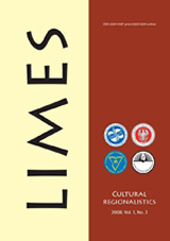The Process of the Construction of the National Identities on the Polish–Lithuanian–Belarusian Borderland
The Process of the Construction of the National Identities on the Polish–Lithuanian–Belarusian Borderland
Author(s): Andrzej SadowskiSubject(s): Social Sciences
Published by: Vilnius Gediminas Technical University
Keywords: borderland; “cultural nation”; national identity; national (ethnic) minority
Summary/Abstract: In this article I will at least try to outline the necessary methodological assumptions for the future researches on the national identities of the inhabitants of the Polish – Belarusian – Lithuanian borderland. Then, using the results of the studies of the identities on the Polish – Belarusian borderland, I will attempt to prove the thesis, that in present conditions, the national identity should not be treated as only subjective reflection of someone’s national membership, described with the use of a given set of features on the different levels of objectification, but should be understood broader: declaration of the national identity also means taking of the certain position, defining of someone’s place and duties within the dynamic and changeable national structure. We can distinguish four types of the collective actors, which shape the national identities on the studied border-land: (1) ethnic minorities (with which certain categories of the citizens identify), (2) national majorities backed by the power of the state in which the representatives of the minorities live, (3) the “foreigner fatherlands” (R. Brubaker) and (4) international organizations which create certain legal regulations and who monitor (control) their realization. In the studies of the national identity of the Polish-Belarusian-Lithuanian borderlands some theoretical approaches can be distinguished. There is a need to define, at least for the use in the studies, the concepts of national minority and ethnic minority, and to create a new theoretical category – “the cultural nation”. The national (ethnic) minority can be distinguished in the specific minority situation, most frequently in the context of the other, dominant majority, as the community, which is less significant, subordinated and often discriminated. The notion of national-ethnic self-identification should be associated with the resourcefulness of the representatives of a given minority in certain environments.
Journal: LIMES: Cultural Regionalistics
- Issue Year: 2008
- Issue No: 1
- Page Range: 46-54
- Page Count: 9
- Language: English

